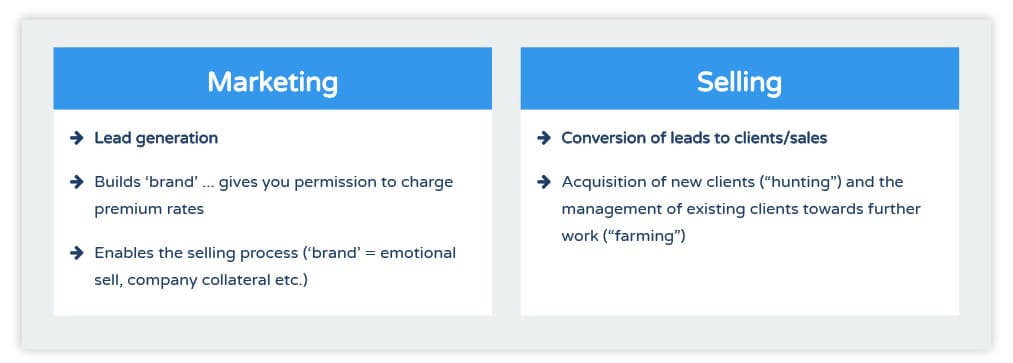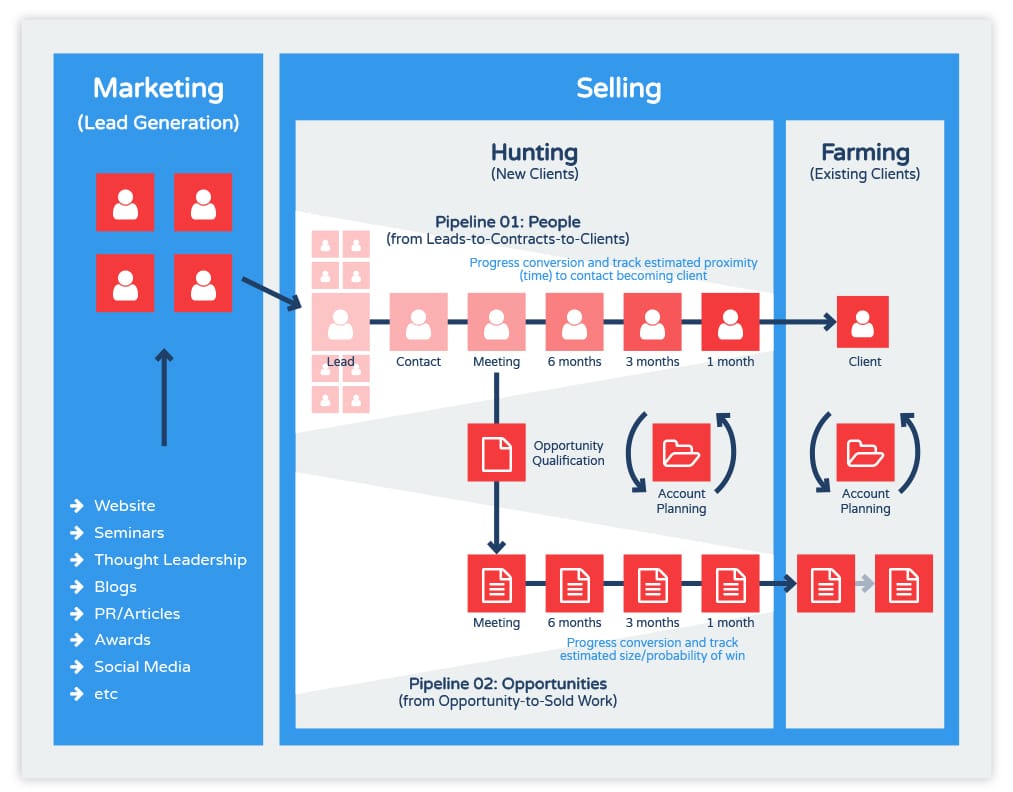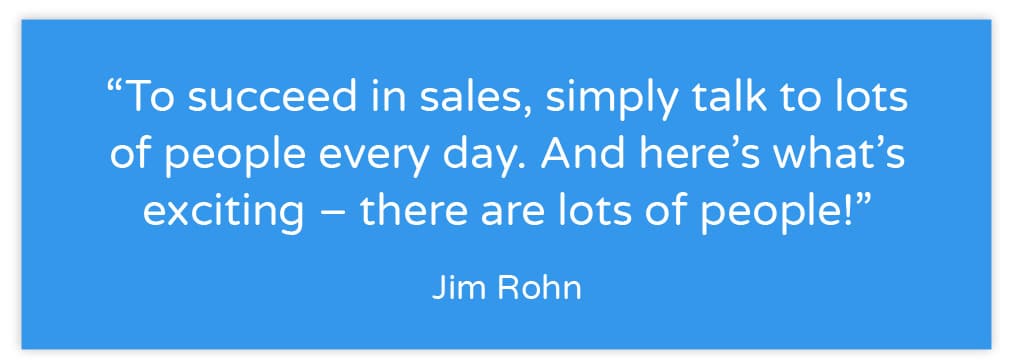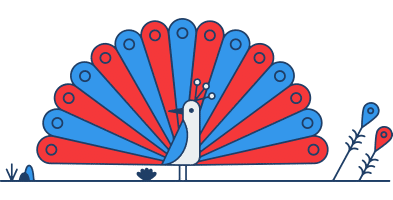Early-stage conflation - Hunting and Farming - Two pipelines - Selling is a human process - Here’s what is exciting!
Last week, I forced you to acknowledge how fundamental a selling capability is to your firm’s success and, therefore, future value. It also touched on what it takes to build a sustainable sales capability that isn’t reliant on specific individuals. In coming blogs, I want to dive into this further but before I do, it is essential that you understand the difference between marketing and selling. I have noticed that early-stage entrepreneurs often conflate the two terms in their minds and with their language. When I observe this, I also see firms that do neither particularly well. Evidently, they are very closely related disciplines but you need first to understand the clear distinction before you can focus on becoming successful in both.
Climbing Mount Audacity…
From Startup to Scaleup!
We're sharing everything we know about how to build an awesome professional service firm (and enjoy the journey en route!) PLUS travel updates, reflections on our stumbles and general musings on our Method Grid journey.
Signup below to get the latest articles
direct to your inbox.
The difference between marketing and selling
Selling is very distinct from the activity of marketing (I will tackle professional service marketing in future blogs). If marketing is about brand development and lead generation, selling is about the conversion of leads-to-contacts-to-clients and maintaining excellent relationships thereafter. These two aspects clearly work ‘hand in glove’ but to merge them together, as many do, is to miss the very unique challenges of each and, therefore, to court failure.
Selling can be broken down into two key sub-areas – the acquisition of new clients and the management of existing clients towards further work. The colloquial terms ‘hunting’ and ‘farming’ are often used to capture these activities respectively. In coming weeks, I will talk about techniques for both and the relative effort weighting that should be applied to each.

Figure: Key differences between marketing and selling
At the heart of a disciplined sales method lies a pipeline-based forecasting and management process. At the wide, open end of this ‘funnel’ you will have all the many leads that are being generated by your marketing activity and your own individual research. At the other, far narrower end, you will have clients putting fresh signature to the latest contract. Pipeline management is about progressing this conversion with maximum efficiency (moving towards optimal conversion ratios and a shorter lead-to-contract time lag).

Figure: An overview of the key elements of selling
Specifically, in future blogs, I am going to introduce the concept of managing two separate, but closely related, pipelines. One will track your relationships with prospective clients: in recognition that selling, fundamentally, is a human process involving the search for, and dialogue-build with, the ultimate client decision maker. This pipeline is best calibrated by time-to-contract; that is your estimate as to how long it is going to take to get to the sold work point. Key techniques within this journey include how best to handle an initial introductory chat (say, at a conference or in the proverbial ‘lift conversation’), how best to handle an initial contact and how to maximise success from a sales meeting.

The second pipeline is that of specific opportunities that arise from your relationships with prospective clients (in the people pipeline) or as a result of unsolicited invitations to tender (ITT). This pipeline is calibrated by your estimate of likely probability of winning the work, which, along with a size of contract estimate, is the core input into your forward revenue pipeline view (we will cover later). Key techniques involved here are the qualification process (is it worth your time/ effort to pitch for the work?) and, of course, advice on writing winning proposals.
The more significant the opportunity, the more time you need to spend in analysing the prospective client’s requirements, the competition and your differentiation in order to craft the optimal set of selling activities. All of this – account planning – will be touched on as it pertains to gaining new clients and, importantly, the ongoing development of existing relationships and business.
So, with the marketing-selling distinction now clear in your mind, in coming blogs we can start to get into the detail of this.
So, what’s next?
Next week, I will continue my focus on selling and how to build a sales capability: with a look at your sales attitude (or ‘the voice within’). It all starts here!
Hopefully, you’ll join us on this journey. It’s totally free, and you don’t have to be a Method Grid customer (though you’re more than welcome to sign up for a free trial here).
We’ll be releasing a new post each week. To get each post emailed to you as soon as it’s published, sign up for the Climbing Mount Audacity mailing list below.
Climbing Mount Audacity…
From Startup to Scaleup!
We're sharing everything we know about how to build an awesome professional service firm (and enjoy the journey en route!) PLUS travel updates, reflections on our stumbles and general musings on our Method Grid journey.
Signup below to get the latest articles
direct to your inbox.
See you next week. Have something you want to hear more about? Let me know in the comments below or via Twitter.

 Project and Program Management
Project and Program Management  Project Governance Framework
Project Governance Framework  Benefits Management Framework
Benefits Management Framework 






